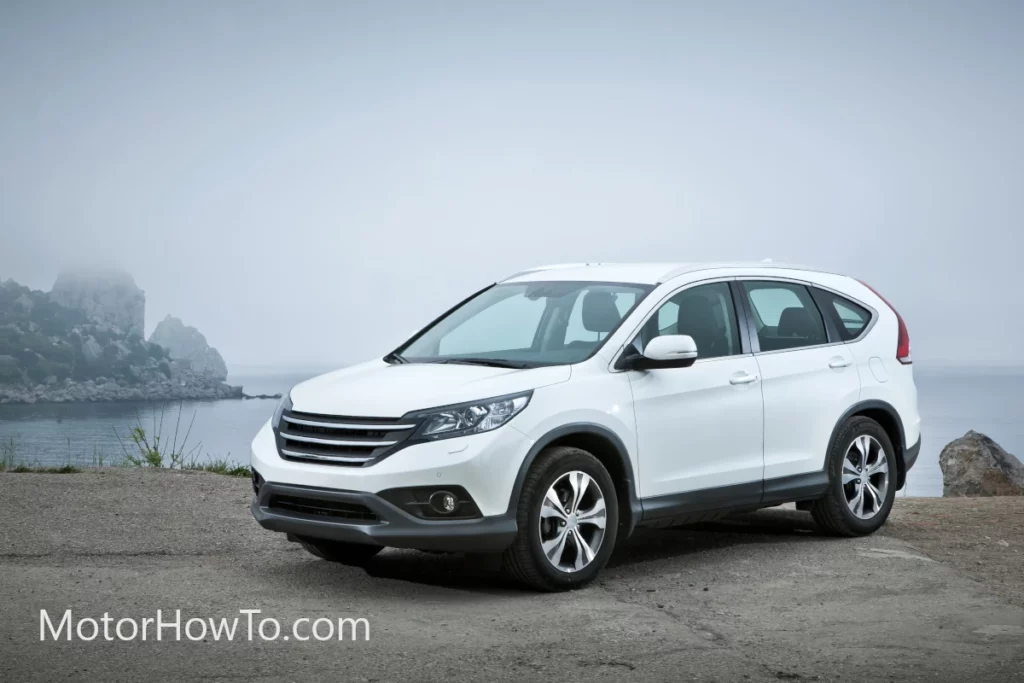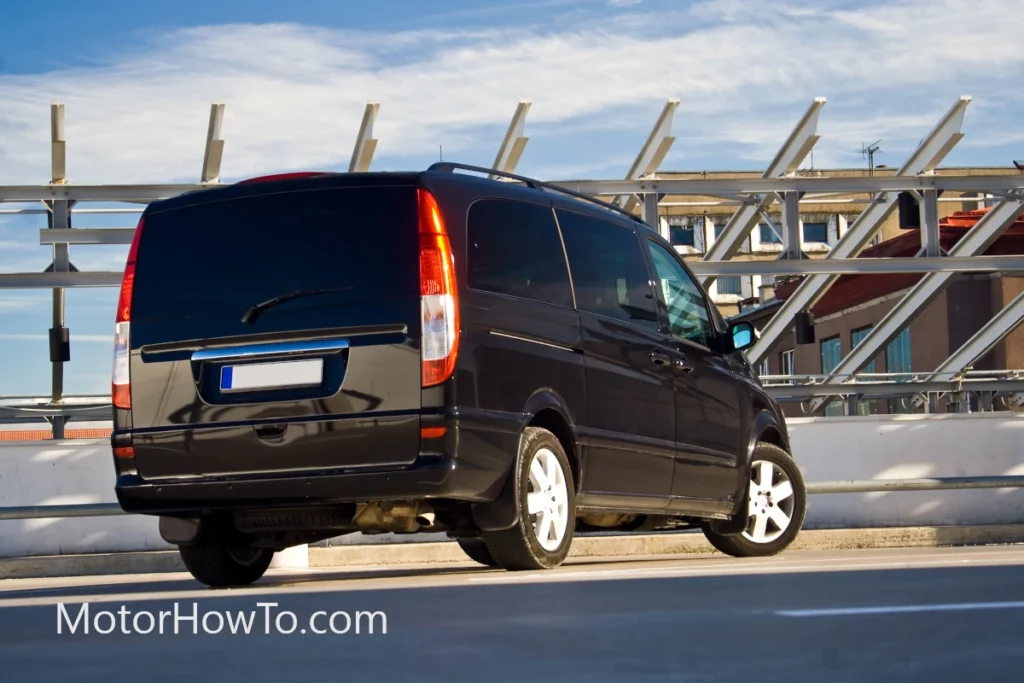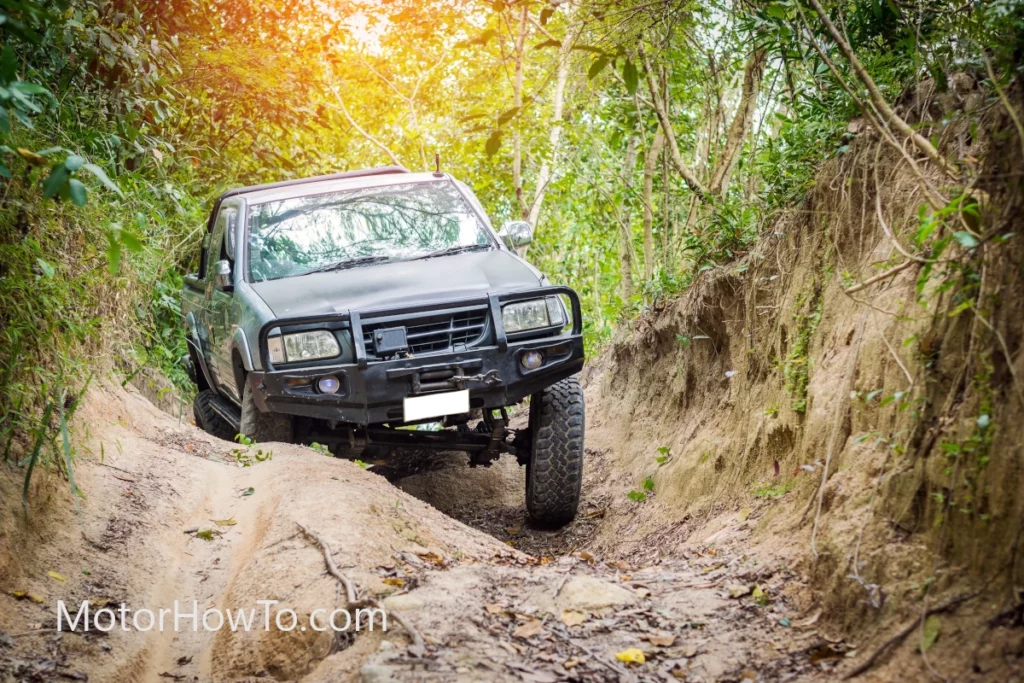We find ourselves captivated by the journey more than the destination itself, enchanted by the call of the open road.
Each adventure is enhanced by the faithful four-wheeled companions that escort us along the way.
Choosing the perfect accomplice to accompany your travels, however, can often feel like an overwhelming task.
Vans are typically larger with a boxy design, offering more interior space ideal for cargo or large families. SUVs, on the other hand, offer a balance of passenger space and off-road capability. While both have higher seating, SUVs generally have more robust performance and better handling.
- Defining the Contenders: What are Vans and SUVs?
- Exploring Van Design: Functionality Meets Spaciousness
- The SUV Aesthetic: Balancing Comfort and Adventure
- Performance Comparison: On-road and Off-road Capabilities
- Interior Layouts: Evaluating Space and Comfort
- Cost Comparison: Purchase Price and Maintenance
- Final Thoughts
- Sources

Among the choices, two types of vehicles frequently lead to a deadlock in decision-making: one, a symbol of family-friendly versatility, and the other, an embodiment of sporty ruggedness.
With this in mind, let’s delve deeper into the nuances that distinguish these popular roadsters without leaning toward any specific type.
Related:
- Difference Between a KUV and an SUV? Deciphering the Intricacies of Utility Vehicle Classification
- Why Do People Call SUVs Trucks? Unraveling the Semantic Mysteries of Automotive Terminology
- SUV & 6 Major Parts (Explained For Beginners)
Defining the Contenders: What are Vans and SUVs?
In the grand arena of the automotive world, a van and an SUV (Sport Utility Vehicle) represent two distinct species, each born from a unique blend of design philosophies and practical considerations.
To understand these vehicles, we must first dive into the essence of what they are, what they represent, and the purposes they serve.
Vans, long the emblem of utility and versatility, are often associated with a boxy shape, generous interior room, and a primary focus on people or cargo hauling.
Their designs prioritize functionality and spaciousness over sportiness, often featuring sliding side doors and sometimes even raised roofs.
On the other hand, SUVs capture a spirit of ruggedness and sportiness.
Traditionally built on a truck-like, body-on-frame chassis (though many modern SUVs employ a car-like unibody design), SUVs usually feature a high ride height, ample passenger space, and more robust performance capabilities.
They are designed to balance comfort and an off-road adventurous spirit, hence the name Sport Utility Vehicle.
Exploring Van Design: Functionality Meets Spaciousness

With its pragmatic design approach, Vans are engineered to prioritize space, utility, and functionality.
Often characterized by a box-like shape, these vehicles deviate from the traditional aesthetics of streamlined curves and sleek lines in favor of a more practical appeal.
This layout grants them considerable interior room, making them ideal for tasks involving large quantities of cargo or passengers.
Their high-roof design and broad interior enhance cargo capacity and enable easy movement within the vehicle, a feature particularly appreciated in passenger or family-oriented models.
Sliding doors on one or both sides facilitate easy entry and exit, especially in tight parking spaces.
The seating arrangements in vans are also highly versatile. Many models feature rows of seats that can be folded down, removed, or reconfigured to accommodate a range of hauling needs.
This focus on spaciousness and functionality over aesthetic design truly underlines the key characteristics of the van design philosophy.
The SUV Aesthetic: Balancing Comfort and Adventure

SUVs, or Sport Utility Vehicles, blend a car’s comfort and passenger capacity with a four-wheel-drive vehicle’s strength and off-road capability.
Unlike vans, SUVs display a more dynamic aesthetic, often with a more rounded, streamlined design that maintains an imposing road presence.
The higher ground clearance, larger wheels, and sturdy body-on-frame or unibody designs all contribute to a distinctive rugged look, a nod to their off-road capabilities.
Despite their adventurous spirit, SUVs don’t compromise on comfort.
The interiors are often plush, equipped with modern technology, and designed with passenger comfort as a priority. They offer spacious cabins, ample legroom, and cargo space.
While they may not have as much interior space as vans, many SUVs come with foldable rear seats to create more cargo space when needed. This balance of ruggedness, luxury, off-road and on-road capability, comfort, and adventure defines the SUV aesthetic.
The SUV design is geared towards individuals and families who demand versatility and the option to explore beyond the boundaries of paved roads.
Performance Comparison: On-road and Off-road Capabilities

Performance is a significant deciding factor when comparing vans and SUVs, as it directly impacts the driving experience, versatility, and suitability of these vehicles to different lifestyles and needs.
Vans are primarily designed for smooth, paved roads. Their larger size and weight and a typically softer suspension provide a comfortable and stable ride for long distances.
However, they might not handle as well in more demanding conditions due to a lack of off-road-specific features.
Furthermore, the engine in a van is usually focused on providing adequate power for hauling people or cargo rather than high-speed performance.
On the contrary, SUVs are created with a dual-purpose mindset. They are designed to perform admirably both on and off the road.
An SUV offers a higher driving position on paved streets, providing a commanding view of the road.
Many modern SUVs have powerful engines, sophisticated suspension systems, and advanced driver-assistance systems, resulting in car-like handling and comfort, despite their size.
When venturing off the beaten path, SUVs have the upper hand.
They generally come equipped with off-road capabilities like higher ground clearance, four-wheel-drive or all-wheel-drive systems, and sometimes even specialized modes for different types of terrain.
These features allow SUVs to traverse conditions like snow, sand, rocks, and steep gradients, which would be challenging for a van.
While vans are masters of comfort on the road and excel in transporting large groups or cargo, SUVs offer a more balanced package that caters to various driving conditions and lifestyles.
Interior Layouts: Evaluating Space and Comfort
The interior layout defines a vehicle’s practicality and ability to deliver a pleasant, comfortable driving and riding experience.
Both vans and SUVs can accommodate multiple passengers, but how they do so, and the available creature comforts can be significantly different.
In a van, the design caters predominantly to maximize space and functionality.
Vans are traditionally boxier, which results in a larger interior volume. They often come with three rows of seats as a standard, with some larger models offering even more seating.
Depending on the model, these seats can often be folded, removed, or rearranged to optimize cargo space or passenger comfort.
Additionally, sliding side doors allow easy access to rear seats, a boon in crowded city conditions or tight parking spots. Some high-end vans offer features like rear-seat entertainment systems, reclining seats, and ample storage compartments for long trips.
On the other hand, SUVs blend comfort, luxury, and a touch of ruggedness in their interior layout.
While they may not provide as much space as vans, the design is often more upscale, providing a blend of spaciousness and creature comforts.
Most SUVs offer two or three rows of seating, with the higher-end models offering amenities like leather upholstery, heated seats, state-of-the-art infotainment systems, and panoramic sunroofs.
The seats in many SUVs can also be folded down to increase cargo space, though perhaps not to the same extent as in most vans.
In essence, vans provide sheer space and functional design, ideal for large families or those who need to haul a significant amount of cargo.
In contrast, SUVs balance comfort and utility, offering luxury amenities and versatile nature.
Cost Comparison: Purchase Price and Maintenance
When considering the purchase of a vehicle, the cost is undoubtedly a significant factor. The initial purchase price and the ongoing maintenance costs contribute to the total cost of ownership.
Vans and SUVs, due to their different designs, performance capabilities, and targeted user bases, carry different cost structures.
The purchase price of a vehicle varies greatly depending on its make, model, and the features it offers.
However, SUVs, particularly luxury models, are more expensive than vans. This is due to their more sophisticated designs, higher performance capabilities, and the luxury features many of them offer.
On the other hand, vans, being more utilitarian, typically carry a lower purchase price.
Regarding maintenance, SUVs might require more frequent and potentially more expensive upkeep due to their off-road capabilities and the more complex technologies they incorporate.
Conversely, Vans often have lower maintenance costs due to their simpler design and functionality.
However, it’s important to note that costs can vary greatly from model to model within each category.
Factors such as the brand, the vehicle’s age and condition, and how the vehicle is used can impact the purchase price and maintenance costs.
Therefore, it’s always advisable to research individual models thoroughly before making a purchase decision.
Final Thoughts
In conclusion, the choice between a Van and an SUV is not merely a matter of preference but one that should align with your specific needs and lifestyle.
Each of these vehicles has its distinct characteristics and advantages:
Vans are the epitome of space and functionality, offering generous interior room, versatile seating arrangements, and ease of access. They excel at transporting large groups or cargo, making them ideal for families, businesses, or anyone in need of a spacious vehicle. Vans are typically more budget-friendly in terms of purchase price and maintenance costs, making them an economical choice.
SUVs, on the other hand, strike a balance between comfort and adventure. They provide a more upscale and comfortable interior, often with luxurious features, making them appealing to those seeking a touch of luxury in their daily commute or road trips. SUVs are designed to handle both on-road and off-road conditions, offering versatility for various driving scenarios.
When making your decision, consider your priorities, such as space requirements, performance needs, budget constraints, and intended usage.
Whether you opt for the sheer functionality of a van or the versatile luxury of an SUV, both have their unique appeal and can complement different lifestyles and preferences.
Ultimately, the journey is what matters most, and the right vehicle will enhance your adventures on the open road.



